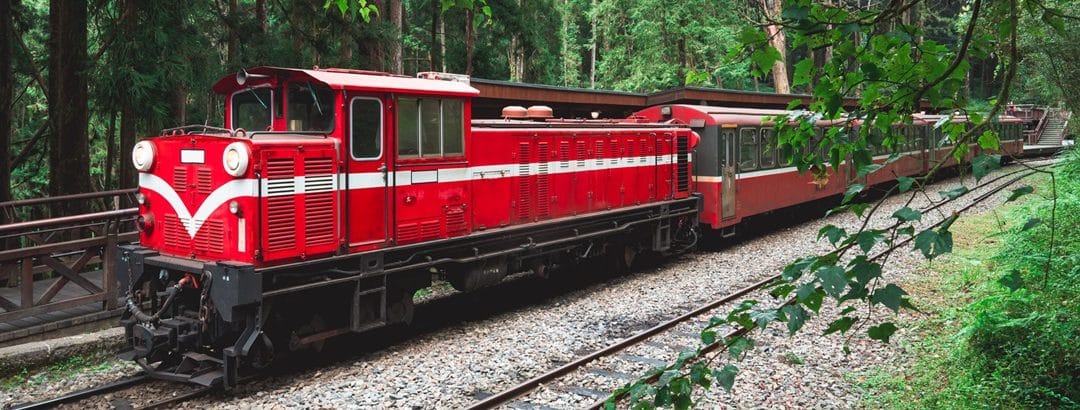Ines Lucas Vasallo | 03/12/2021
The railway industry and metro services are recognized as one of the most important economic sectors in the various cities where they are present: they are large sources of employment, have a positive impact on local economies, and they offer important environmental benefits. While their development in the Latin American region has been unequal, there are currently important projects underway in its present-day metropolises. However, their planning and construction is usually more complex than other types of constructions. Manuela López Menéndez, Chair of the Latin American Association of Metros and Subways (ALAMYS), tells us in this interview about the evolution, challenges and solutions offered by the construction and employment of this transport system.
1) How has the evolution of underground infrastructure in Latin America been? Which cities in the region have been pioneers in the construction of transport on railways and, more specifically, the underground?
In Latin America, in 1913, Buenos Aires pioneered the execution of underground railway infrastructure, not only with Line A but also with the construction of a one-way cargo tunnel for taking the trains from the Sarmiento railway to the port area of Buenos Aires. Line A was built in the open air, with intensive labor, when our subsoil was not full of interferences like it is now.
Many years passed until, at the end of the 1960s and in the 1970s, first Mexico City, then São Paulo, Rio de Janeiro and Santiago de Chile incorporated metro systems.
2) What is the current situation regarding the infrastructure of railway transportation in the region? Is it aligned with the needs of Latin American cities?
The metro construction works are increasingly costly, both due to the amount of interference that the underground space occupies as a result of the development of other infrastructures, coupled with the lower levels of risk that we are willing to accept in modern society, as well as due to the technological advances that offer much more sophisticated systems.
For all these reasons, in some cases overground metros are being designed and in others, the works are experiencing delays with respect to what is planned.
3) Several news articles have recently been published in the press that talk about important investments in metro railway infrastructures in countries in the region. Could you tell us about some of the most relevant projects in progress or in planning in the region?
Quito and Bogota are developing metros. In Quito’s case, it is an underground metro, which started in 2013 and has an operation start date planned for mid-2022. In Bogota, it is an overground metro and has a start date planned for 2028. Meanwhile, since 2014, Lima has been advancing with underground Line 2, which will be added to Line 1, which is overground.
Santiago de Chile also has a strong expansion plan. The extensions of Lines 2 and 3 are currently under construction, while a new Line 7 and studies for two new lines are in the tender process.
4) In general, who are the main investors operating in the construction of metro railway works in Latin America?
In the vast majority of cases, state-owned businesses responsible for the construction, operation and management of metro networks in Latin America belong to or are fully or partially financed by the national governments of each country. In the first three cases mentioned in the previous question, financing was made available from multilateral banking and national and municipal governments. The metro works in Santiago are financed largely by the national treasury and to a lesser extent by the sale of tickets.
5) What are the biggest challenges in the management of construction projects of this type of infrastructure? What characteristics does your planning have, compared to other types of constructions?
The planning and construction of underground metro projects tends to be more complex than other types of constructions. The need for a large number of systems to coexist and interact in a reduced space, interference with other underground and surface infrastructures, geotechnical and construction difficulties, safety and evacuation issues, are all elements that greatly complicate the design and execution of this type of work.
6) What are the risk management policies associated with these infrastructures like, when dealing with such specific challenges?
Risk is an element inherent to all underground work and must be taken into consideration from the first stages of project planning and design, until its construction and subsequent operation. It can be managed, minimized, shared, transferred or accepted, but must never be ignored.
The execution of analytics and matrices that allow for the clear identification of risks together with their corresponding prevention and mitigation measures, assigning them to the various participants involved in the projects, is a common practice in metro construction projects.
Risk management in an underground project is a complex subject and its approach has been evolving steadily in recent years. To give an example, the Emerald Book of FIDIC(*) published in 2019 has been developed specifically for tunnelling works. While it has been conceived primarily for mountain tunnelling contracts, where geological risk is usually greater than that of a metro project, many of the concepts that arise from it are also applicable to our projects.
7) Currently, which countries are more specialized in this type of construction, and which are currently betting most on its development?
Due to its complexity and high cost, it is natural that the development of this type of construction has occurred more extensively in the most developed countries. The main cities in Europe, such as London (soon to open the first Crossrail line), Paris, Madrid and Barcelona have metro systems and underground railway interconnections that are examples to follow. The New York metro, with more than 1,000 km of tunnels, continues to be the largest metro in the world, to give an example in America. And China, with a lower profile, is probably the country with the greatest infrastructure investment in this type of project. In the Latin American region, the metros of São Paulo and Santiago continue to be at the forefront in terms of network development.
8) When railway transportation is mentioned nowadays, it is often presented as a sustainable transport solution. What is this statement based on? What are its advantages over other types of transport?
Railway systems have the potential for mass transportation and commercial speed. They normally entail significant investments with high operating costs that are justified in the cases of large cities. Technological advances have been adapted by the industry in electrification, communications and signal systems, allowing a large number of people to be transported with a low carbon footprint and a minimum amount of urban space. The combination with other sustainable modes of transport such as buses, bicycles and walking allows large urban agglomerates to develop integrated sustainable mobility systems that can minimize the use of private cars and the consumption of fossil fuels, reducing travel times, levels of congestion, road accidents and their consequences measured in the number of deaths and those with serious injuries.
9) What are the technological advances that have had the most impact on the evolution of rail transport? And which ones, in your opinion, are presented as the most promising for the sector in the future?
The different levels of signaling and railway operation that can be automated, reducing waiting times and maintaining and improving security, as this optimizes the use of an expensive construction and operation infrastructure. For this, projects must be executed in areas where the demand ensures that the profits justify these investment levels.
10) And finally, in your role as Chair of ALAMYS, what measures/actions do you consider must be promoted in order to further boost the expansion of the metro rail system in the region?
Large cities face the challenge of improving the mobility of their inhabitants, achieving quality employment opportunities and access to a wide range of educational, health, cultural and recreational services. City centers maintain their vitality if their area of influence is extensive enough to compete with the emergence of sub centralities within the framework of the decentralization processes.
As part of comprehensive mobility systems, overground, underground and surface railway systems can offer the mass transportation and efficiency required by large cities over the longest distances and through the areas of highest demand, in order to provide an alternative to the random use of private cars and all the negative external factors associated with them.

Manuela López Menéndez is an economist who graduated from the Catholic University of Argentina (UCA) and studied Urban Planning and Regional Development in the United States. She has extensive experience in the Transport sector and in public space management.
In addition, she was Director of the Metropolitan Transport Agency tasked with the mission of developing public policies together with the Province and the City of Buenos Aires, in order to improve mobility in the Metropolitan Area.
In the third sector, she is a founding partner of the Base Foundation; she was part of the Apertura Foundation and the Asociarse para Crecer Foundation, for regional productive development; and she was an adviser on Public Policies relating to the Public Space at the Creer y Crecer Foundation.
(*) The “Emerald Book” (more officially: “Conditions of Contract for Underground Works”) was produced by the International Federation of Consulting Engineers (FIDIC) and the International Tunnelling and Underground Space Association (ITA). It was launched at the World Tunnel Congress in Naples. The launch comes after several years of intensive work by a team of FIDIC and ITA representatives, who identified several issues that the new standard form of contract should address in order to promote equal risk allocation and effective treatment of typically unforeseeable conditions in such projects.





